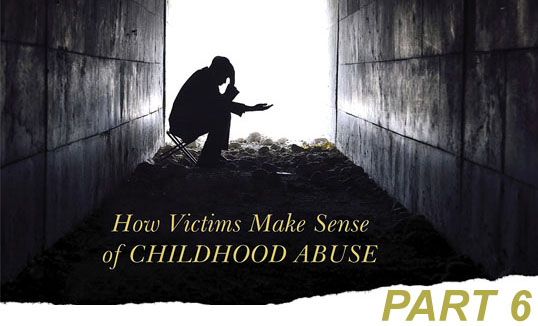Bonded to the Abuser: Part 6
In this 6-part series, Dr. Baker will provide a summary of the topics discussed in the book.
Bonded to the Abuser: Part 5
The 45 memoirs summarized and analyzed in Bonded to the abuser: How victims make sense of childhood abuse, heartbreakingly portray the basic desire most children have – even those abused and neglected – to be accepted and loved by their parents. They depict a scenario in which – absent any external influence – that desire remains intact, intractable regardless of the quality of the actual parenting the children receive. The authors of these memoirs while growing up could not imagine a way to go forward except in search of the love of their parent. In that sense, they are profoundly stuck. There is no alternate path in view. They are filled with unrequited longing and stuck in the belief that it is the parent’s love and acceptance that will make them loveable and worthy of being loved.
Thus, one of the tasks of healing from this kind of trauma is to modify the belief that the parent must love and accept the child in order for the child to love himself and accept himself as a good and worthy person. In this way, the maltreatment victim needs to “unbind” or “unbond” himself from the maltreating parent, separating himself from that parent’s views of him. As long as the abuse victim’s mind is locked into emotional dependency on the abuser, there is little chance he can move forward away from the pain of the abuse.
It is clear through reading these 45 memoirs that the act of storytelling itself can play a central role in that very important process of untethering the abuse victim from the abuser. Storytelling has a long history in the healing of trauma, and deservedly so. The healing power of telling one’s story is certainly evident in the memoirs reviewed for this book. The authors painstakingly memorialized their painful childhood struggle with the hopes and expectations that in doing so they would diminish and manage their pain in a new way. There are many lessons that can be learned from these memoirs – summarized in Bonded to the abuser – that can be applied to the work that we all do every day with survivors of childhood maltreatment.
The New York Foundling’s Dr. Mel Schneiderman and Dr. Amy Baker are the authors of “Bonded to the Abuser: How Victims Make Sense of Childhood Abuse” – available May 16th. To purchase or view the book on Amazon.com please click here: Bonded to the Abuser: How Victims Make Sense of Childhood Abuse
To visit the author’s website: http://www.amyjlbaker.com/
Acknowledgments: Selected by Rowan and Littlefield for a book signing at the 2015 Book Expo of America




